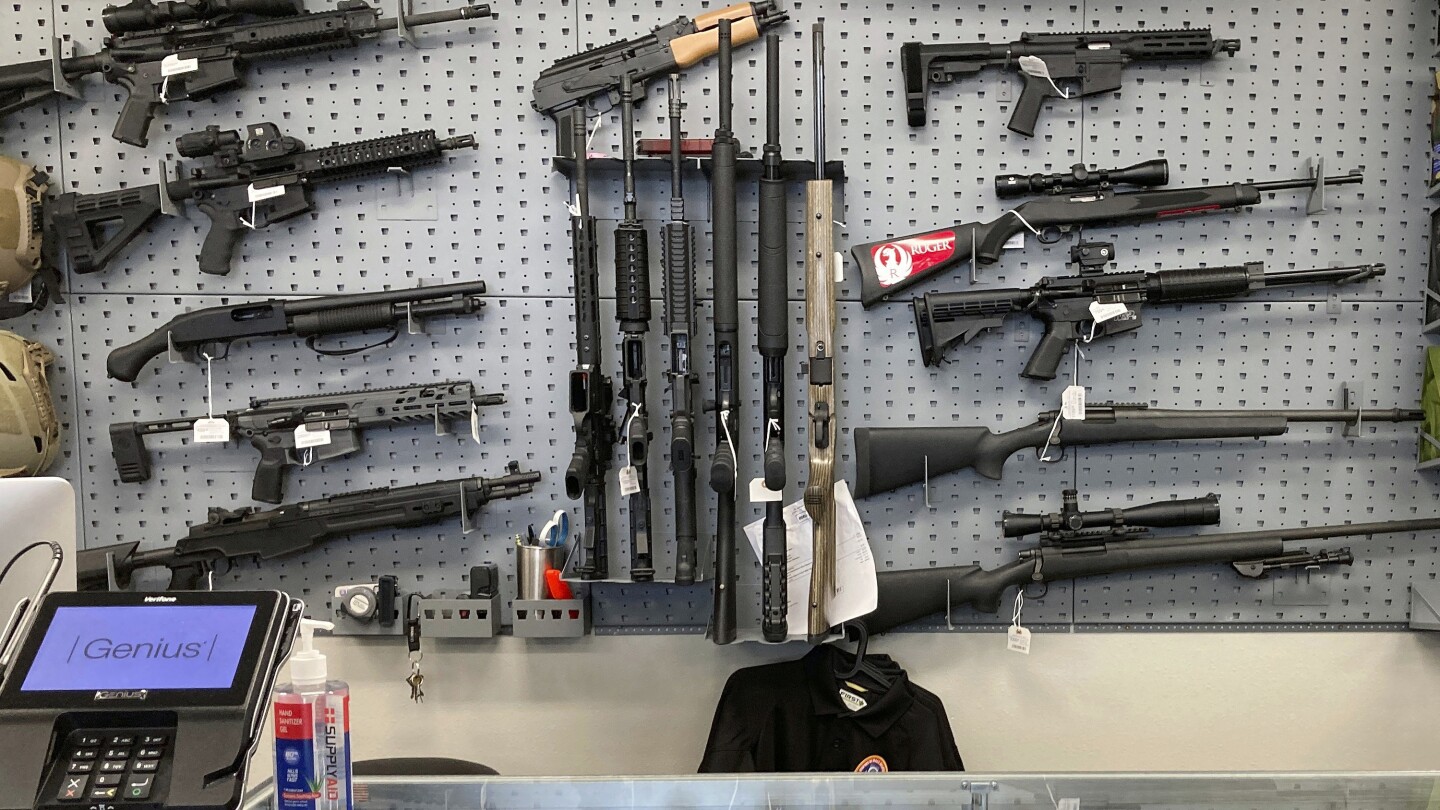A voter-approved Oregon gun control law violates the state constitution, a judge ruled Tuesday, continuing to block it from taking effect and casting fresh doubt over the future of the embattled measure.
The law requires people to undergo a criminal background check and complete a gun safety training course in order to obtain a permit to buy a firearm. It also bans high-capacity magazines.
The plaintiffs in the federal case, which include the Oregon Firearms Federation, have appealed the ruling to the 9th U.S. Circuit Court of Appeals. The case could potentially go all the way to the U.S. Supreme Court.



I would suggest reading, “Gunfight: The Battle Over the Right to Bear Arms in America” by Adam Winkler (ISBN 0393345831). The author has extensive end notes so you can check his sources. (There are also a number of books out there about the use of arms in the struggle for civil rights, but that’s not directly relevant.)
This is greatly condensed. First, under English common law at the time, it was understood that the right to own arms for self defense was an individual right. The English king had previously disarmed groups (Catholics, I think? I’m not sure off the top of me head), and though it had taken a while, English courts had ruled that it was not legal for the gov’t to seize arms from the people. In the Americas, people were just armed. Most people had guns (certain anti-gun researchers have falsely claimed otherwise, but their claims simply don’t stand up), although “people” here is defined as white, male landowners, since women didn’t really have rights, and black people were largely enslaved. The militias of the time were *ALL able-bodied men. The people were legally obligated to provide their own weapons–which meant weapons fit for military service–and to both practice on their own, and muster with the rest of the militia when they were called to do so. The colonists were largely in charge of defending themselves, because it was expensive and slow to send the British army and navy over when colonists had skirmishes with the French or Native Americans. (I’m not making a values judgement on the colonists being colonizers and taking Native American land; just saying that’s the context.) The first real battle of the American Revolution occurred at a period when England was trying to exert more control over the colonies, and decided to seize the weapons that the the colonists had been amassing. The Battle of Lexington and Concord was specifically that; an attempt to seize weapons from the militias.
The people that wrote the constitution intended for the people to be armed, and for the people to be armed with military weapons. Self defense was clearly a consideration, but it wasn’t the only consideration. When you read the things that the leaders of the revolution and authors of the constitution wrote regarding arms, it’s clear that they never intended it to be a right of the government; after all, the constitution gave the government the right to raise an army, so why would you need to have an amendment that also gives the gov’t the right to have arms?
In regards to the violence - I’d argue that guns are not the problem, but are only tools. Switzerland and Finland both have heavily armed populations, but have very, very low murder rates, and very low rates of violent crime in general. The US combines a large number of guns with uniquely bad social and economic conditions; if we effectively address the social and economic conditions, then the issues with violent crime will largely disappear on their own, without the removing the civil rights.
Thank you that was an interesting read and I learned something new.
How do their laws around firearms and gun control compare? Is it apples to apples?
It is not, no. There are no countries where it’s apples-to-apples. Each country is going to have differing gun laws and regulations, so there’s no way to make an absolutely perfect comparison.
Having spoken to Finnish gun enthusiasts, you need to go to a range and shoot a certain number of times in a year in order to get permits to buy, but there are a limited number of ranges, and the slots fill up very quickly. But once you have permits, things like silencers are available without issue. It’s not significantly harder to get tactical/assault-style rifles than it is to get pistols. Background checks don’t seem to be any more significant than the checks that you have to go through in the US. Finns have a strong culture of hunting, as well as shooting Russians, so there’s quite a few gun owners in Finland.
Switzerland has conscription, so most people end up having to serve a year or so in the military, and then have the option of keeping their service rifle. Each canton seems to do their own permitting, but in general it’s not terribly difficult to get permits. Again, it’s not significantly more onerous to get a permit than it is to pass a background check in the US. The Swiss also have a strong culture of competitive shooting. Switzerland in general is pretty monocultural; it’s not easy to emigrate to Switzerland.
Both countries also have very strong social safety nets, and are significantly flatter economically; there isn’t the same kind of economic gulf between the poor and the wealthy in either country that we see in the US. Both countries have a judicial system that’s geared towards reform rather than punishment. Both countries have some form of socialized medicine, so that families aren’t going bankrupt because mom has breast cancer, or dad had a car accident. There’s far, far less religious extremism in both countries (religious extremism really drives the moralistic attitudes in the US towards crime and poverty).
Conversely, we can look at the UK and Australia to see what happens when you remove firearms, but don’t correct social conditions. (England, in particular, has been cutting all social programs.) Violent crime rates–defined as robbery, murder, assault/battery, and forcible rape–are roughly similar in the UK and Australia to the US, although the US has a far higher murder rate overall. Violent crime in the US is more lethal, but the lack of guns doesn’t have any effect on the overall violent crime rates. Rates of forcible rape in Australia are, IIRC, rather significantly higher than they are in the US. (A caveat is that you can never do a perfect comparison in crimes between countries, because the way that a crime is defined in the US will be different than it is defined in e.g. Canada. So these are rough comparisons, but essential correct, even if not perfect in all the particulars.)